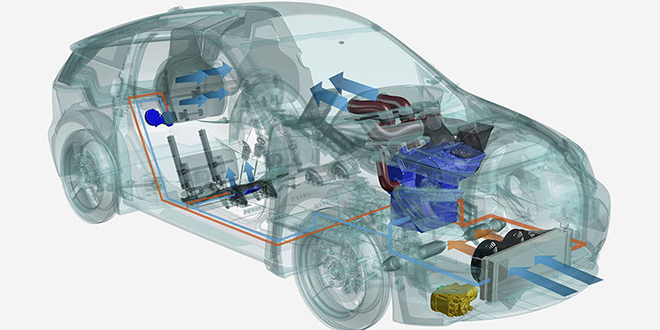Energy-gobbling accessories such as air conditioning can take a big bite out of an EV’s range, but a pleasant interior climate is a must. Researchers at the Technical University of Munich (TUM) have been working on this dilemma as part of the research program Visio.M.
In a legacy vehicle, waste heat from the engine is used to heat the passenger compartment directly. But efficient electric motors generate hardly any waste heat, so climate control systems need to draw energy from the battery.
TUM scientists took a fresh look at the problem, and determined that the most efficient solution is heating or cooling in direct proximity to passengers’ bodies, rather than conditioning the entire interior of a car.
SEE ALSO: German researchers optimize regenerative braking with torque vectoring transmission
“Our trials showed that uniform climate control is not necessary,” says Marius Janta of the Chair for Ergonomics at TUM. “When we heat the seat of a passenger on cold days, passengers find it pleasant. With only a small amount of energy we can significantly reduce the sense of discomfort.”
In the Visio.M prototype vehicle, the temperature of the seats is controlled using Peltier elements, semiconductors that can be used for both heating and cooling. “Even though Peltier elements are relatively expensive, they warm up or cool down immediately,” says Alexander Präbst of TUM’s Chair of Thermodynamics. “Compared to the cold start of a combustion engine in winter, they even improve the level of comfort.”
The Peltier elements installed in the seats have a peak performance of 150 W per seat. Since Peltier elements are light, they are also used in the AC unit, where they have a performance capacity of up to 1.6 kW.
The Visio.M achieves maximum efficiency by integrating the performance electronics into a holistic thermal management system, using waste heat from the motor and performance electronics to heat the passenger compartment in the winter, and using excess capacity of the AC system to cool the electronics in the summer. The cabin can be pre-conditioned using a smart phone app.
MORE: Concept EV uses LEXAN windows to boost range
Source: Technical University of Munich
Photo: Alexander Präbst / TUM



















































